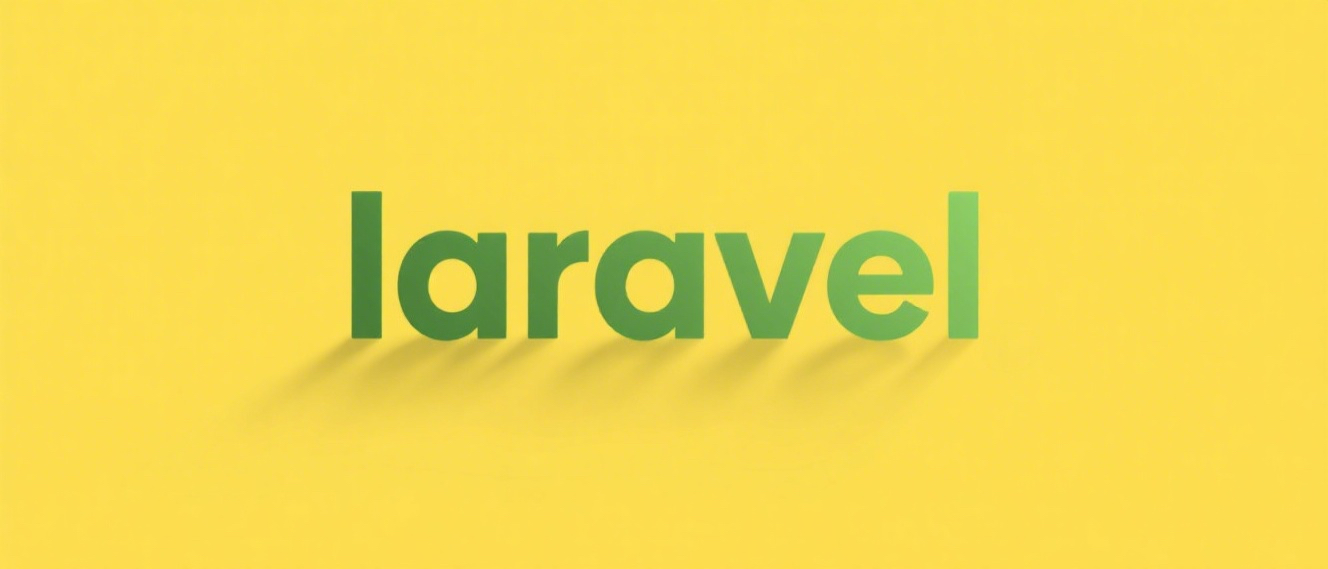Protecting your application with Laravel security features
Jul 09, 2025 am 01:31 AMLaravel provides robust security features to protect applications from common web vulnerabilities. Use built-in CSRF protection by including @csrf in all POST/PUT/PATCH/DELETE forms and avoid disabling it unless necessary, using API tokens instead. 1. Leverage Eloquent ORM or Query Builder for database queries to prevent SQL injection via parameter binding. 2. Sanitize user input using validation rules like 'email' => 'required|email' and middleware such as TrimStrings and ConvertEmptyStringsToNull for consistent data. 3. Secure routes with Laravel’s authentication and authorization system using Gates and Policies, ensuring only authorized users can perform specific actions, and apply middleware like auth or can to restrict access effectively.

Laravel comes with a ton of built-in security features that help protect your application from common web vulnerabilities. If you're building something serious, relying solely on basic setup won't cut it — you need to make use of what Laravel offers under the hood.

Use Built-In CSRF Protection
One of the most important things Laravel does automatically is handle CSRF protection. Every time you create a form using Blade’s @csrf directive, Laravel adds a hidden input field with a token that verifies the request came from your site and not from a malicious third-party page.

- Make sure every POST/PUT/PATCH/DELETE form includes
@csrf - Don’t disable CSRF protection unless you have a very specific reason (like public APIs — but even then, use API tokens instead)
It's easy to forget this when writing custom forms or working with JavaScript-based submissions, so double-check your code before pushing to production.
Leverage Eloquent for Database Queries
Using raw SQL queries opens the door to SQL injection attacks if you’re not careful. Laravel’s Eloquent ORM and Query Builder help prevent that by default because they use parameter binding behind the scenes.

For example:
// Safe query using Query Builder
User::where('email', $request->input('email'))->first();This way, any user input gets properly escaped before being sent to the database. Avoid concatenating variables directly into SQL strings unless you absolutely have to — and even then, always sanitize and validate first.
Sanitize User Input with Validation and Middleware
Validation is one of the easiest ways to stop bad data at the door. Laravel’s Form Request and controller validation helpers are solid tools.
Use rules like:
'email' => 'required|email''password' => 'required|min:8'
Also, don’t forget to clean up inputs before saving them. For instance, trimming whitespace or stripping HTML tags where appropriate can prevent unexpected behavior later.
You can also combine validation with middleware like TrimStrings and ConvertEmptyStringsToNull, which come enabled by default in Laravel. These help keep your data consistent without extra effort.
Secure Your Routes with Authentication and Authorization
Most apps need some kind of access control. Laravel provides a simple but powerful system using Gates and Policies.
Let’s say you want only the owner of a post to be able to edit it:
Gate::define('update-post', function ($user, $post) {
return $user->id === $post->user_id;
});Then in your controller or Blade views, you can check:
if (Gate::allows('update-post', $post)) { ... }Also, make sure your routes are protected using middleware like auth or can. For example:
Route::put('/posts/{post}', [PostController::class, 'update'])->middleware('can:update-post,post');This ensures users can’t just guess URLs and perform actions they shouldn’t.
That’s basically it. Laravel gives you strong tools out of the box — but you still need to use them right. Keep your forms safe, your queries clean, your inputs validated, and your routes locked down.
The above is the detailed content of Protecting your application with Laravel security features. For more information, please follow other related articles on the PHP Chinese website!

Hot AI Tools

Undress AI Tool
Undress images for free

Undresser.AI Undress
AI-powered app for creating realistic nude photos

AI Clothes Remover
Online AI tool for removing clothes from photos.

Clothoff.io
AI clothes remover

Video Face Swap
Swap faces in any video effortlessly with our completely free AI face swap tool!

Hot Article

Hot Tools

Notepad++7.3.1
Easy-to-use and free code editor

SublimeText3 Chinese version
Chinese version, very easy to use

Zend Studio 13.0.1
Powerful PHP integrated development environment

Dreamweaver CS6
Visual web development tools

SublimeText3 Mac version
God-level code editing software (SublimeText3)

Hot Topics
 What are policies in Laravel, and how are they used?
Jun 21, 2025 am 12:21 AM
What are policies in Laravel, and how are they used?
Jun 21, 2025 am 12:21 AM
InLaravel,policiesorganizeauthorizationlogicformodelactions.1.Policiesareclasseswithmethodslikeview,create,update,anddeletethatreturntrueorfalsebasedonuserpermissions.2.Toregisterapolicy,mapthemodeltoitspolicyinthe$policiesarrayofAuthServiceProvider.
 What are routes in Laravel, and how are they defined?
Jun 12, 2025 pm 08:21 PM
What are routes in Laravel, and how are they defined?
Jun 12, 2025 pm 08:21 PM
In Laravel, routing is the entry point of the application that defines the response logic when a client requests a specific URI. The route maps the URL to the corresponding processing code, which usually contains HTTP methods, URIs, and actions (closures or controller methods). 1. Basic structure of route definition: bind requests using Route::verb('/uri',action); 2. Supports multiple HTTP verbs such as GET, POST, PUT, etc.; 3. Dynamic parameters can be defined through {param} and data can be passed; 4. Routes can be named to generate URLs or redirects; 5. Use grouping functions to uniformly add prefixes, middleware and other sharing settings; 6. Routing files are divided into web.php, ap according to their purpose
 How do I run tests in Laravel? (php artisan test)
Jun 13, 2025 am 12:02 AM
How do I run tests in Laravel? (php artisan test)
Jun 13, 2025 am 12:02 AM
ToruntestsinLaraveleffectively,usethephpartisantestcommandwhichsimplifiesPHPUnitusage.1.Setupa.env.testingfileandconfigurephpunit.xmltouseatestdatabaselikeSQLite.2.Generatetestfilesusingphpartisanmake:test,using--unitforunittests.3.Writetestswithmeth
 What is the purpose of the artisan command-line tool in Laravel?
Jun 13, 2025 am 11:17 AM
What is the purpose of the artisan command-line tool in Laravel?
Jun 13, 2025 am 11:17 AM
Artisan is a command line tool of Laravel to improve development efficiency. Its core functions include: 1. Generate code structures, such as controllers, models, etc., and automatically create files through make: controller and other commands; 2. Manage database migration and fill, use migrate to run migration, and db:seed to fill data; 3. Support custom commands, such as make:command creation command class to implement business logic encapsulation; 4. Provide debugging and environment management functions, such as key:generate to generate keys, and serve to start the development server. Proficiency in using Artisan can significantly improve Laravel development efficiency.
 What are controllers in Laravel, and what is their purpose?
Jun 20, 2025 am 12:31 AM
What are controllers in Laravel, and what is their purpose?
Jun 20, 2025 am 12:31 AM
The main role of the controller in Laravel is to process HTTP requests and return responses to keep the code neat and maintainable. By concentrating the relevant request logic into a class, the controller makes the routing file simpler, such as putting user profile display, editing and deletion operations in different methods of UserController. The creation of a controller can be implemented through the Artisan command phpartisanmake:controllerUserController, while the resource controller is generated using the --resource option, covering methods for standard CRUD operations. Then you need to bind the controller in the route, such as Route::get('/user/{id
 How do I start the Laravel development server? (php artisan serve)
Jun 12, 2025 pm 07:33 PM
How do I start the Laravel development server? (php artisan serve)
Jun 12, 2025 pm 07:33 PM
To start the Laravel development server, use the command phpartisanserve, which is provided at http://127.0.0.1:8000 by default. 1. Make sure that the terminal is located in the project root directory containing the artisan file. If it is not in the correct path, use cdyour-project-folder to switch; 2. Run the command and check for errors. If PHP is not installed, the port is occupied or file permissions are problematic, you can specify different ports such as phpartisanserve--port=8080; 3. Visit http://127.0.0.1:8000 in the browser to view the application homepage. If it cannot be loaded, please confirm the port number, firewall settings or try.
 How do I use Laravel's validation system to validate form data?
Jun 22, 2025 pm 04:09 PM
How do I use Laravel's validation system to validate form data?
Jun 22, 2025 pm 04:09 PM
Laravelprovidesrobusttoolsforvalidatingformdata.1.Basicvalidationcanbedoneusingthevalidate()methodincontrollers,ensuringfieldsmeetcriterialikerequired,maxlength,oruniquevalues.2.Forcomplexscenarios,formrequestsencapsulatevalidationlogicintodedicatedc
 How does PHP handle file system operations, and what are the security considerations?
Jun 19, 2025 am 01:00 AM
How does PHP handle file system operations, and what are the security considerations?
Jun 19, 2025 am 01:00 AM
PHP handles file system operations through built-in functions, but needs to pay attention to security risks. Common functions include fopen(), file_get_contents(), unlink(), etc., which are used to read, write, delete and check files; user input must be verified during operation to prevent path traversal attacks; script access to directories should be restricted through open_basedir; reasonable permissions should be set to avoid sensitive files being read and written; verification of types and renaming when uploading files; performance is recommended to use buffer reading and regular cleaning of temporary files. Following best practices can improve safety and efficiency.






